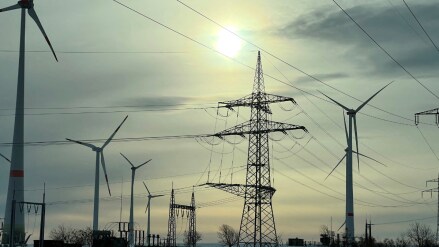The proposal of state-owned NTPC to the power ministry for pooling of its entire capacity for sale of power to distribution companies comes from the need to optimise the cost of power due to the high capital costs of new thermal capacity being added by it, for the end consumer.
Analysts say that pooling of the entire capacity might help the company to get users for the new capacity with higher charges for power compared with the older plants, helping increase the plat load factor.
According to senior NTPC officials, the company has written a letter to the power ministry seeking approval to pool its entire capacity to distribute power across the country. This, they said, will help in optimising the cost of power and improve efficiency as new thermal projects come online in coming years.
“The new capacity that is coming is much costlier. Now it is very difficult to make a plant which is less than Rs 10 crore per megawatt (a decade ago, this was roughly half). The incremental utilisation of these plants will be much less than it used to be (in the absence of pooling,” an official said. “The other thing is because incremental capacity utilization is going to be less, per unit capacity charges are going to be very high, inflating the power costs, and denting competitiveness of the economy.”
If approved, the NTPC’s move can improve the operational flexibility and ensure a steady supply of power to discoms and states at times of station malfunction or shutdown, according to the analysts.
“From NTPC’s perspective, a pool level pricing will help them to find offtalkers for these (new thermal plants) projects easily compared to the current scenario,” said Vikram V, Vice-President & Co-Group Head – Corporate Ratings, Icra, adding that competitiveness for new projects is weak for the company.
Bhanu Patni, Associate Director, Sector Head (Energy) at India Ratings also highlighted that new thermal capacities being added have higher capital costs resulting in higher tariffs compared to what the discoms witnessed a decade back. Coupled with this is the rising cost of coal over the past few years.
“Early projects of NTPC have become debt free given they have already run their course and as per CERC norms, you’d typically get a loan of 12-15 years, and after that plant will run on a fixed cost recovery basis,” said Patni. “Therefore, in those plants the fixed cost of power would be pretty low whereas in newer plants the fixed cost would be pretty high,” she said, adding that NTPC might be looking at the pooling option, probably to balance this in its overall portfolio.
NTPC sources also said that there will be no violation of the power purchase agreements (PPAs) it has with discoms, as a result of the pooling system.
However, analysts do think that discoms under a PPA arrangement with an older thermal capacity may not be entirely in favor of the plan. If it is to happen, NTPC will require the regulator’s approval and discoms’ cases will have to be heard, Vikram noted.
“Cost of power procurement from NTPC for the discoms varies from state to state. Projects which are older will get at a cheaper rate. But states which are procuring power from new projects, will have higher tariffs,” said Vikram. “For newer projects it’s easier, because the tariff is so high for the new projects, the competitiveness is obviously a concern. So this kind of common pooling will help them.”
Analysts believe that the proposal has been made to ensure equitable distribution of tariff across states and will not affect NTPC in any manner.
Patni also noted that it will not impact the newer thermal plants even as the final offtake of power may remain dependent.
“Given that most of these plants are under CERC guidelines, fixed cost recovery for them will not get hampered because PPAs are already in place and fixed charges are payable as long as you are declaring the normative availability,” she said. “So while the PLF (plant load factor) could be a little challenging in extreme conditions, the recovery of the tariff does not see any impact.”
